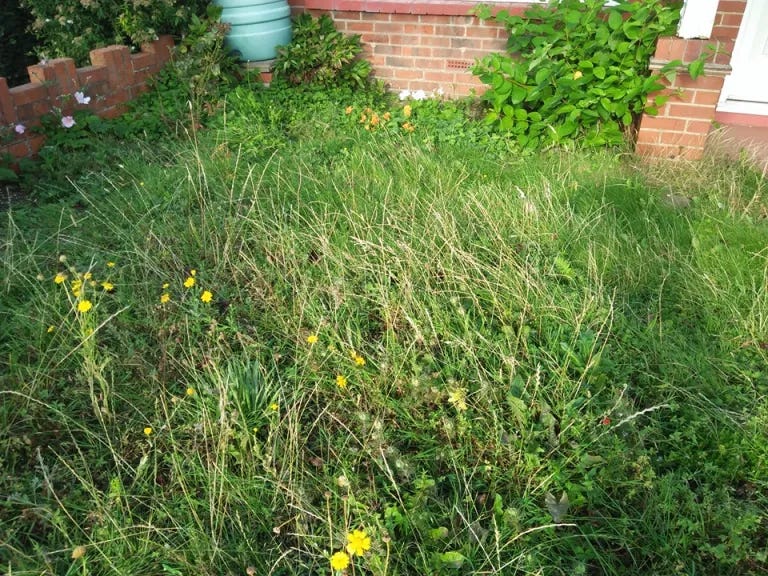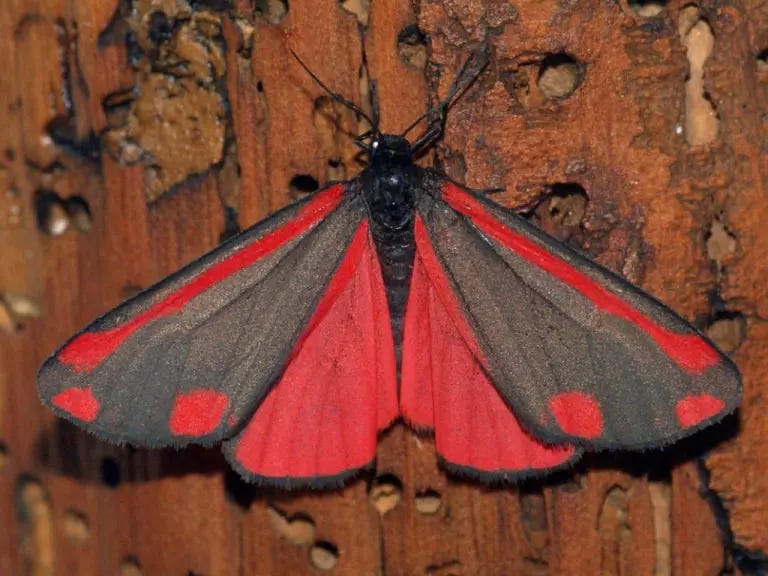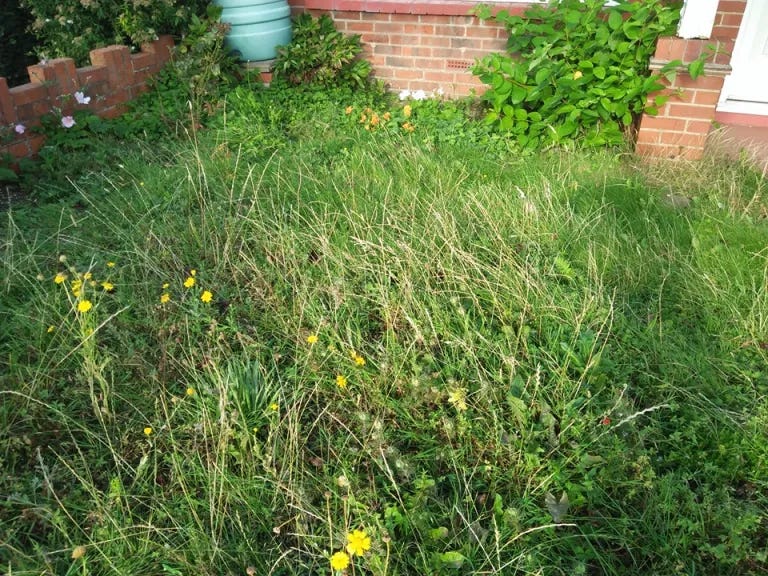My Blue, Blue Heart Part 2
Is ‘weed’ a thing? A scientific category? Real, in any meaningful way?
Biodiversity in Worthing
Last post, I was troubled by reports from a local Worthing magazine that residents had been pushing the council to ‘tidy up weeds’ on kerbsides.
When an edition of Conservative party ‘intouch’ newsletter sneaked into our letterbox, it proudly trumpeted that County Councillor Bryan Turner has been demanding better action on weeds …Broadwater and Gaisford are among the areas that have seen work in recent weeks.
With an interesting lack of sensitivity to irony, to inappropriateness or to the obvious cynicism implied by trying to ride two horses, the paragraph right below that declaration of victory in a war-on-weeds abruptly switched tack. The follow-on paragraph was a piece about landfill and recycling, which piously proclaimed, We need to do this to conserve our natural resources and improve our natural environment.
Saywhat?
Weedkiller-spraying and care for the environment make the strangest of bedfellows, don’t they?
Weedkiller-spraying and care for the environment make the strangest of bedfellows, don’t they?
Is ‘Weed’ A Taxonomic Reality?
In my last post, Sarah from Worthing’s Forest School educated me about ‘weeds’ on kerbsides and began to explain the rewilding concept. On the heels of that, I realised how much learning I needed to do. When Betsy from Blue Campaign spoke to me, she addressed my confusion and my need for more information.
Betsy understood my puzzlement at the pervasive double-think epitomised by that ‘spray weedkiller & recycle’ council policy and commented: We claim to love nature, but we see ‘mess’ and ‘wasteland’.
Betsy echoed Sarah’s explanation about the need for migration routes. This means allowing pathways of wildness where wildlife can travel, stop and take rest. She added that this is supported by a fundamental understanding that we don’t support nature – it supports us. We don’t need to control nature … insects, birds, mammals, support us all.
I ask about ‘weed’ – scientifically, is there such an entity? I’m super-confused here. I’ve heard the old saying that, a weed is just a plant whose virtues have not yet been discovered; but I’ve also been instructed by experienced gardeners to watch out for ‘proper’ seedlings and hoe out the rest. (Doesn’t work – even the most experienced gardeners can’t easily tell the difference). At the same time, as an anthropologist, I know very well that what passes as ‘knowledge’ changes with each generation, that taxonomy is a social affair, and that science is socially embedded – and has never been neutral. (As useful example here: biologists have been wringing their hands in dismay for a long time about the unhelpfulness of the taxonomic system we’ve inherited from 19th C science).
I can’t help wondering, then, if we might all have been misled about the very category of ‘weed’. Is the ‘weed concept’ a nonsense? Yet another (yawn) artefact of 19th and 20th C modernity? (So, so weary with all these hangovers).
Betsy? Is ‘weed’ a thing? A scientific category? Real, in any meaningful way?
We need to stop people thinking ‘ ‘weed’. It’s an archaic idea of what’s pretty and what’s not … nature doesn’t have to be ‘pretty’ … there’s this idea of nice-looking flowers. The mindset is stuck. Everything is beautiful in its own right. I used to think of ‘mess’ and now I’m understanding. Nettles are fantastic for butterflies; cinnabar moths love ragwort.
Step Back, Pause, Let Go of Control
Is this then about learning to see function, rather than a human-centred and conventional aesthetic? Apparently not even that. Functionality would simply be another stand-in for beauty – an equally human-generated scale of value.
It’s about shifting the baseline, and our idea of what nature is. That means stepping back, letting go of control.
I remember hearing something similar during the interview for the last post: Sarah’s counsel was – pause before intervention.
At Blue Campaign we’re not goal oriented. We’ve got long grass and Painted Ladies, all sorts. New stuff turns up. (I remember Sarah making the same point about unexpected wildlife newcomers once you let lie).
That sounds attractive, mindful and wise. And terribly challenging for modern humans, weaned as we have been on fables of progress and on anthropocentric mythologies which paint us as demigods: inventors, improvers, rescuers and achievers.
Empire, Domination – And The English Garden
Intervention in something that we name as ‘nature’ (Nature, even) – and then imagine as something separate from ourselves – has been critical to our boastful narratives of civilisation. And there aren’t many places where that boastful narrative has been so well developed as here in Britain. Bloody hell – even English ‘gardening‘ has been a part of British imperial visions and a placeholder for racialised ideas about taming otherness.
That Tory leaflet about demanding – and getting – “better action on weeds” starts to take on extra nuance now. With local Conservatives playing to the fever for ‘weed free tidy neighbourhoods’, could we be approaching something near the same kind of appeal to the worst part of ourselves as we could also observe in the German right-wing AfD party’s campaign against free-ranging wolves – as proxy for talking about migrants? (Julia Poerting taught me about that set of issues).
Sometimes – usually, actually – things are not at all as simple as they seem. So weed-tidying projects, with their obsession with control, visibility, selecting only chosen species, are locked into white folks’ most intimate desires and fears.
Then again, until we as species let go of our own narcissism, I can’t imagine us humans accepting that anything much is better just left as it is, rather than improved or embellished by us. No amount of discussion about what the anthropocene has wrought seems likely to make us think that the answer is less – not more – intervention.
On the other hand, and more optimistically, there has been talk of a green spring; and the younger generation do seem to have a wider and less parochial understanding of their place in the world (even as the details of how best to move forward on that get debated).
Betsy – what practical steps can we take?
Stop mowing! Or stop mowing a decent part of it – just stop! Change the mowing cycle – just leave it, then cut and collect in September/ October.
Rewilding The Suburban Garden
A few years ago, we replaced our neat turf for a wild front garden. I still feel a bit worried about it and about what the neighbours think. I can’t help wishing it would look more pretty, less messy. I can now understand Sarah and Betsy’s point: that this is because of the way that I’ve been taught to see, taught to think (as much as how I’ve been taught not to think:– forget the environment, forget the future, forget the other species that support your very existence).
If I can learn to see my straggly front garden as a butterfly might, or a field mouse, or a robin, might, then – if Betsy and Sarah are right – I will learn with time to see the beauty in it and I’ll stop fretting when the ‘pretty’ yellow rattle and cowslips don’t appear and a bunch of long, wispy – and univited – grass does instead.
Letting Go Of The Craze For ‘Pretty’
I’ll buy a blue heart for the front, then, so that the neighbours might not judge, but might understand that we’re not plain lazy or crazy. And I’ll be patient with myself while I’m waiting for my own mindset to shift and working through the long process of de-toxing myself from years of bedding-plant porn. (They shove it through my door and into my email all the time. My fault. I’ve been a subscriber to all the big boys. And I’ve been a Sunday garden-centre cruiser, eyeing up juicy little trays of stuff which offer instant high and, often, nasty come-downs).
De-toxing myself from years of bedding-plant porn
Betsy is kind. She counsels patience, promises transformation, accepts small steps. When I rewilded my garden, I found myself being rewilded. It doesn’t have to be a big site – even your own front garden can make a difference.
So it’s a process thing, then. Change your gardening habits, change yourself. Paul Sterry, writing on Mark Avery‘s blog, offers thoughtful reflections on that process.
Another question: I’ve noticed over in Hove that folks have taken ownership and responsibility for their verges and have put bedding plants in. Lots of kerbside trees with marigolds or poppies around their base. That’s got to be a better alternative to weedkiller spraying, but what does Blue Campaign think about it?
Betsy likes the idea that we can become stewards of our own environment, but also returns to her reminder that we need to let go of our hankering for the ‘pretty’ and learn to see with fresh eyes – wildlife and planet-friendly eyes. Remember that pretty isn’t necessarily ecologically sustainable.
Learn to distinguish gardening from rewilding. We don’t recommend wildlflower mixes – you’re not necessarily going to attract species that are local by planting them. Just leave it. See what comes along.
Ah, localism and the concept of ‘native species’ has appeared, which is something else that my anthropologist’s heart has been very troubled by and needs more thought on. Lots to talk about on that score. Gandhi and Nazis, colonial biology, discourse slippage. Another post on all that, then. I Promise.
My 2024 goal is to get my WIP out. 25 years as a white council-estate queer nerd in elite Brit higher-ed institutions taught me a few things. Letting all that smash up against my lifelong love of outrageous storytelling led to a campus novel.
If you’d like to support that, here’s 3 simple ways to help.











I still find it useful to think of 'weeds' as plants in the wrong place. Ragwort in a paddock would be toxic - in a rewilded front garden it's a vibrant splash of yellow. Stinging nettles under a swing would be unkind - but next to the compost heap they make perfect sense ... I think my approach to gardening is about editing what pops up - Plants get moved - to where they suit me - and also to where their specific features are a contribution to other inhabitants of this planet.